You’ll start by cubing day-old bread and mixing it with eggs, milk, and rich butterscotch sauce for a luscious base. Next, pour this creamy mixture into a greased baking dish, then bake at 350°F for about 45 minutes until the top is golden and the center is tender. Finally, serve warm with a drizzle of extra butterscotch or vanilla ice cream. Keep exploring to uncover tips for perfect texture and serving ideas.
Ingredients and Quantity
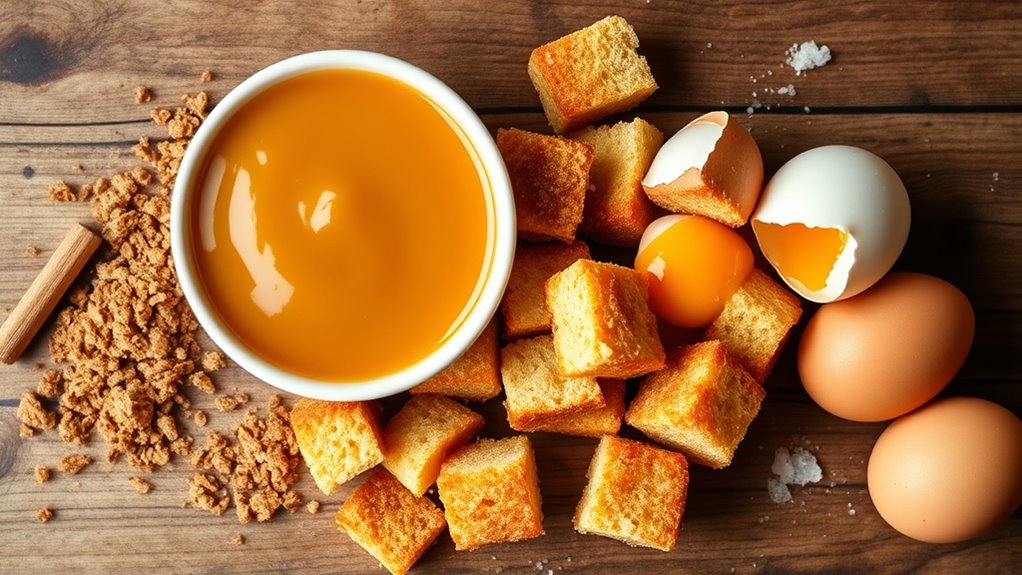
Before you plunge into making this delicious butterscotch bread pudding, you’ll want to gather all the ingredients in the right amounts to guarantee perfect results. Choosing the right bread types and a rich butterscotch sauce is vital to creating that luscious, free-spirited treat you crave. Here’s a handy guide to get you started:
| Ingredient | Quantity | Notes |
|---|---|---|
| Bread (French loaf) | 6 cups, cubed | Stale or day-old preferred |
| Eggs | 4 large | Confirm freshness |
| Milk | 2 cups | Whole milk for creaminess |
| Butterscotch sauce | 1 cup | Homemade or store-bought works |
| Sugar | 3/4 cup | Adjust to taste |
With these essentials, you’re free to craft a pudding bursting with flavor and texture.
Preparations
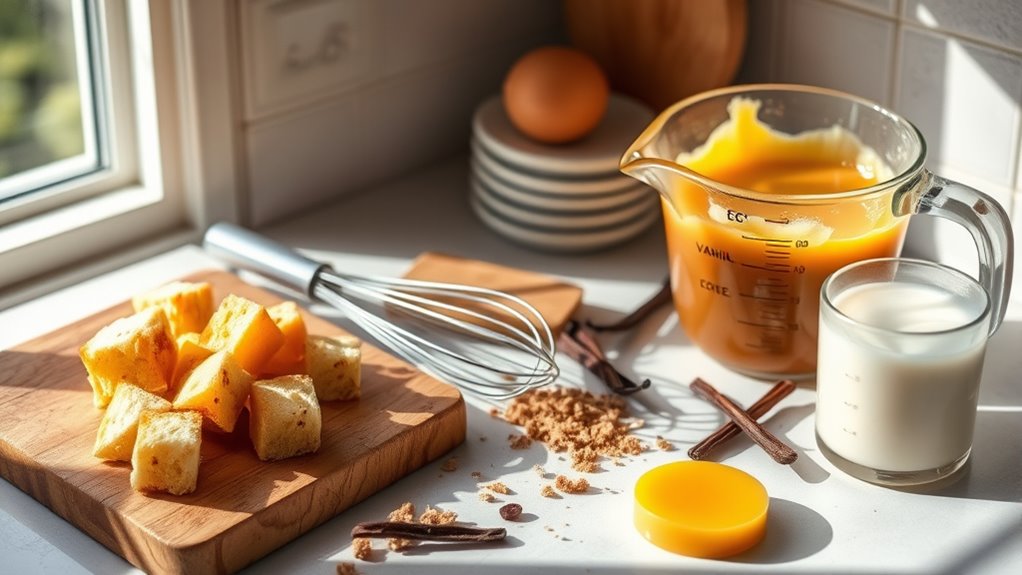
Once you’ve gathered all your ingredients, you’ll want to prepare your workspace and equipment to guarantee a smooth cooking process. Start by choosing bread that has a sturdy texture—day-old brioche or challah works beautifully. This choice assures your pudding soaks up the butterscotch without becoming mushy. Next, tear or cut the bread into bite-sized pieces for even absorption.
As you prep, focus on mixing flavors thoughtfully. Combine your sugars, spices, and vanilla with the wet ingredients before adding the bread. This step lets the rich butterscotch essence meld perfectly with the custard base. Setting up your baking dish and tools nearby means you can move seamlessly from mixing to assembling, freeing you to enjoy the process and anticipate that irresistible, golden finish.
How to Cook
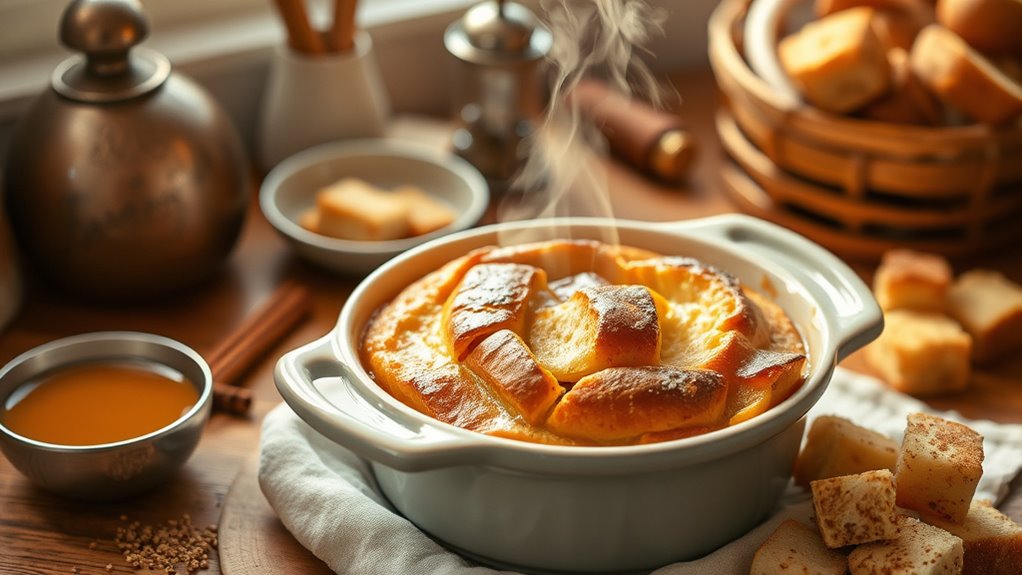
- Preheat your oven to 350°F (175°C) to ensure an even, golden bake.
- Grease your baking dish thoroughly to prevent sticking.
- Pour the soaked bread mixture evenly into the greased dish.
- Place the dish on the middle rack of the oven for consistent heat circulation.
- Bake for 45-50 minutes, allowing the custard to set without drying out.
- Monitor the edges; they should develop a caramel color indicating readiness.
- Avoid rushing the baking process to achieve a creamy texture with a slightly crisp top.
- Use these techniques to create a rich, tender, and perfectly butterscotch-infused bread pudding every time.
How to Serve
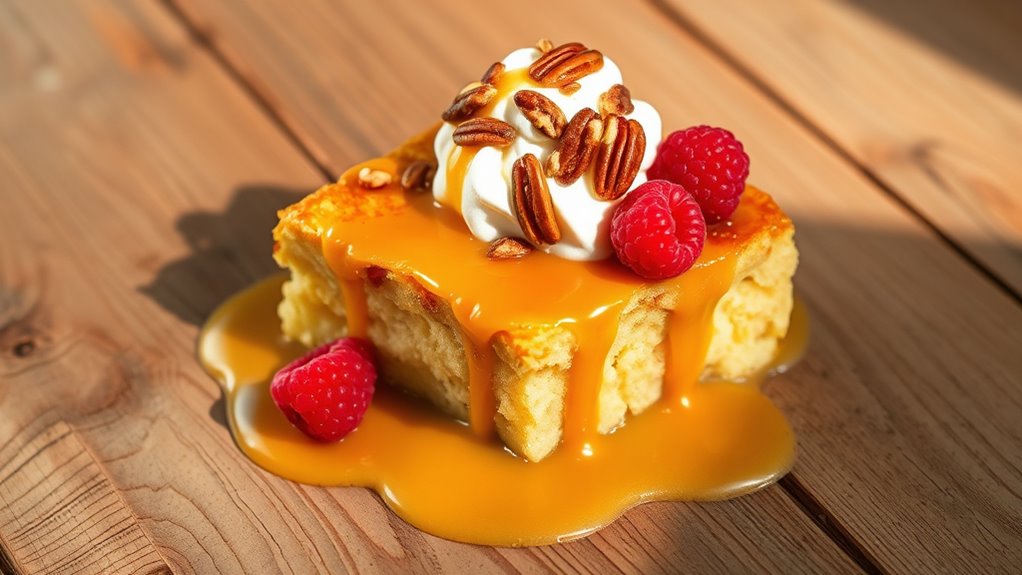
After baking your butterscotch bread pudding to golden perfection, the next step is serving it in a way that highlights its rich, velvety texture and warm, caramel flavors. For serving suggestions, consider pairing each slice with a dollop of freshly whipped cream or a scoop of vanilla ice cream to balance the sweetness. Drizzle extra butterscotch sauce over the top for that indulgent touch. Presentation ideas can really elevate your dessert—serve it in rustic ramekins or on elegant plates, garnished with a sprinkle of toasted pecans or a light dusting of cinnamon. If you want to get creative, add fresh berries for a pop of color and tartness. These simple touches make your butterscotch bread pudding irresistible while keeping the experience relaxed and inviting.
Tips
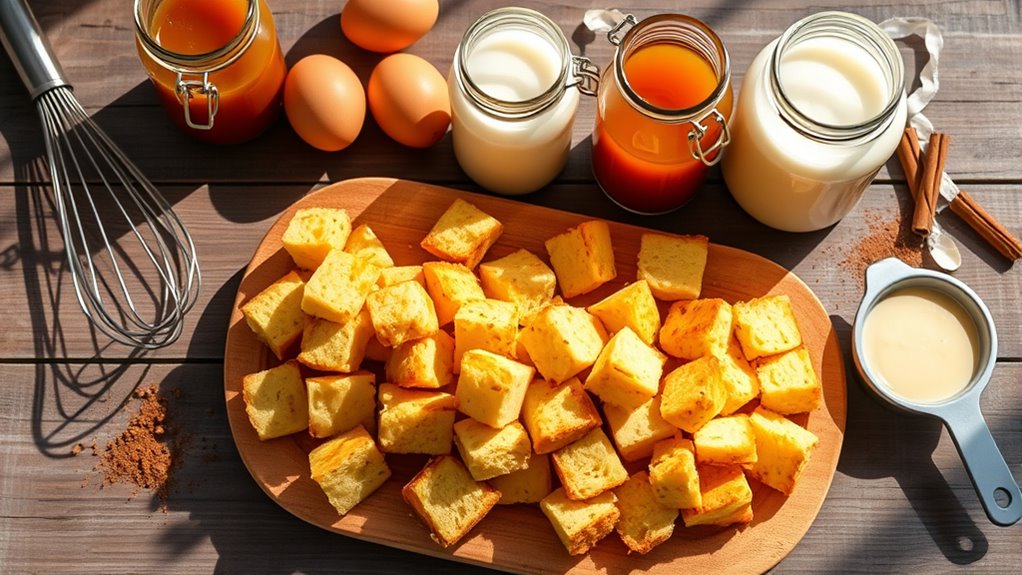
While it might seem straightforward, mastering butterscotch bread pudding involves a few key tips that can elevate your dessert from good to unforgettable. First, when choosing your bread, opt for day-old or slightly stale bread—it soaks up the custard without turning mushy. For the perfect pudding texture, don’t overbake; keep an eye on it until the center is just set but still tender. A water bath can help maintain even heat, preventing cracks. Stir your butterscotch sauce gently to avoid graininess, enhancing its glossy finish. Remember, the quality of your ingredients affects the final flavor—use real butter and fresh vanilla. These baking tips will guarantee your butterscotch bread pudding is rich, creamy, and irresistibly smooth every time.
Food Value and Benefit
One delightful serving of butterscotch bread pudding provides a comforting blend of carbohydrates, fats, and proteins that offer both energy and essential nutrients.
Food Value:
- Rich in complex carbohydrates from bread, which provide steady energy release.
- Contains healthy fats from butter or cream used in the butterscotch.
- Provides moderate protein primarily from eggs and milk.
- Supplies essential vitamins and minerals, including:
- Calcium (from milk and eggs) for strong bones and teeth.
- Vitamin A (from eggs and butter) for immune support and vision.
- Vitamin D (from milk) for calcium absorption and bone health.
- Iron (from eggs and bread) to support oxygen transport in blood.
- B vitamins (from bread and eggs) aiding in energy metabolism.
Benefits of Eating Butterscotch Bread Pudding:
- Offers a quick and satisfying source of energy due to its carbohydrate content.
- Supports bone health thanks to its calcium and vitamin D content.
- Aids muscle repair and maintenance with moderate protein levels.
- Provides essential vitamins and minerals that contribute to overall well-being.
- Allows indulgence with nutritional value, making it a balanced treat when enjoyed mindfully.
